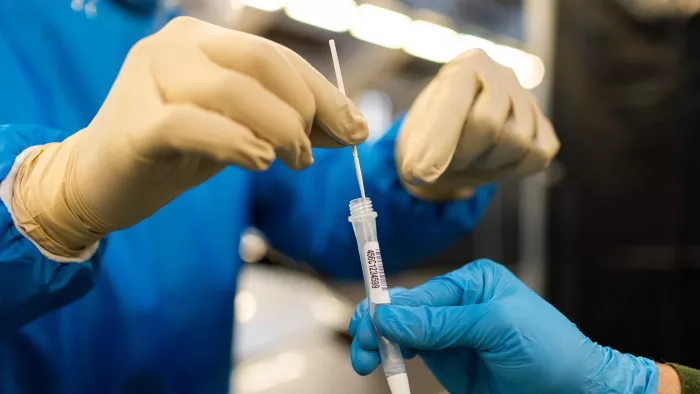The beauty and aesthetic industry is evolving rapidly, with new treatments designed to combat facial volume loss and rejuvenate skin, responding to the growing demand for subtle, natural-looking results.
As weight loss associated with GLP-1 medications like Ozempic has become more widespread, its impact on various industries, including beauty, is becoming evident. Trend analysts are now discussing the emergence of “side effect economies” – markets shaped by the consequences of these medications, influencing sectors such as fashion, nutritional supplements, and beauty treatments.
What is “Ozempic Face”?
In the world of aesthetics, the term “Ozempic face” has emerged to describe the facial changes caused by rapid weight loss linked to medications like Ozempic. This phenomenon is characterized by a noticeable loss of facial volume, sagging, and wrinkling skin. As more individuals seek remedies for these changes, treatments such as dermal fillers and facial rejuvenation procedures are becoming increasingly popular.
Experts are predicting further innovation in aesthetic treatments as the demand for solutions targeting skin elasticity, firmness, and cellular health rises.
“Ozempic face” refers not only to the reduction of fat in the face but also to the associated loss of skin tone and muscle firmness,” explains Dr. Michael Zacharia, a prominent cosmetic surgeon.
New Focus on Restoring Facial Volume
Dr. Zacharia notes that treatment options depend on the severity of the changes, with popular solutions including dermal fillers, biostimulator injections, fat transfer (a process that redistributes fat from one part of the body to another), and even face lifts.
One procedure that has gained traction is the “mini face lift,” which addresses early signs of aging, particularly in the lower face and jowls. Unlike a traditional face lift, which focuses on repositioning deeper facial tissues, a mini face lift targets the superficial layers, delivering subtle, natural-looking results with less recovery time and minimal scarring.
“The mini face lift offers a less invasive approach with excellent results. Patients appreciate the natural enhancement that allows them to look rejuvenated without appearing overdone,” says Dr. Zacharia.
The latest report from the American Society of Plastic Surgeons (2024) indicates a 5% overall increase in plastic surgeries, with face lifts showing an 8% rise. While it is too early to determine a direct correlation, the report suggests this growth may be influenced by the use of semaglutide drugs like Ozempic.
The report also highlights the growing trend toward what it describes as a “ballet body” – a balanced, athletic shape that emphasizes subtle, natural aesthetics over extreme transformations. This shift indicates that previous trends like the Brazilian Butt Lift (BBL) and noticeable facial fillers may be on the decline in favor of more personalized and proportionate enhancements.
Dr. Zacharia echoes this sentiment, noting that patients are increasingly seeking subtle improvements rather than “overfilled” looks. He predicts that surgical treatments like chin augmentation and fat transfer will continue to rise in popularity.
A Shift Toward Skin Rejuvenation
In addition to restoring facial volume, skin rejuvenation treatments are expected to play a larger role in beauty trends. Biostimulator treatments like GOURI, Profhilo, and Sculptra are forecasted to make a significant impact in 2025. These treatments aim to improve skin quality by stimulating the skin’s natural regenerative processes.
Exosomes, small molecules that help cells communicate, are being incorporated into treatments aimed at promoting skin health and rejuvenation. Used with microneedling, injected into the skin, or applied topically, exosomes have shown promise in improving skin elasticity and healing.
While these treatments may not offer the immediate visual impact of dermal fillers or botulinum toxin, they focus on enhancing skin quality from within, encouraging the body to naturally produce plumping and smoothing effects.
With many Hollywood stars maintaining an ageless appearance likely thanks to a combination of these treatments, it’s no surprise that others are following suit.
The Era of Undetectable Injectables
Emily Stevenson, Chief Experience Officer at Caci, confirms that the era of “undetectable injectables” is now a reality. She emphasizes that regenerative treatments, designed to subtly enhance one’s features without obvious signs of intervention, are becoming increasingly popular.
“Regenerative treatments, which stimulate the body’s natural processes, are gaining traction. Treatments like Profhilo, which improve hydration, skin laxity, and firmness, are leading the way,” Stevenson says. “As people prioritize long-term skin health over short-term fixes, collagen-boosting injectables, stem cell-based treatments, and other regenerative technologies are expected to grow in popularity.”
The future of beauty lies in subtle, natural enhancements that focus on the body’s own regenerative abilities, providing a more sustainable and long-lasting approach to aesthetics.
Related Topics





























